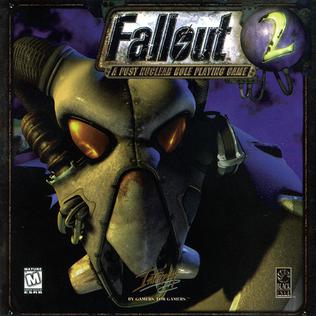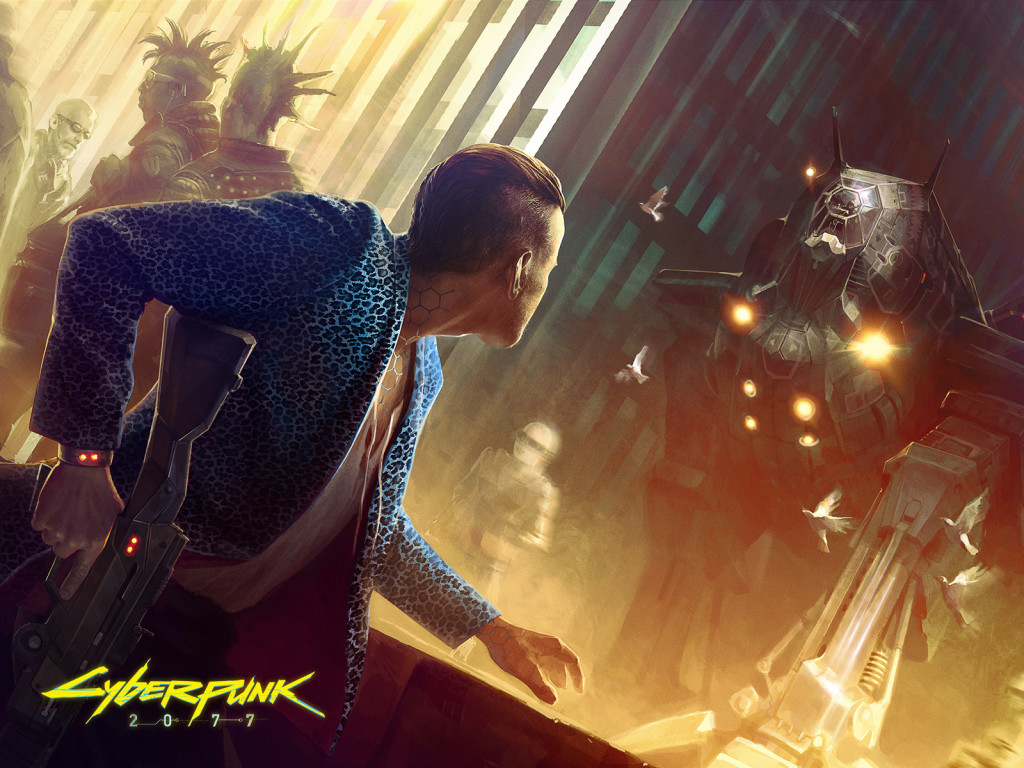Note: this is one of those posts that took on a life of its own. If you do not wish to read an irreverent and somewhat self-deprecating history of my gaming please feel free to skip ahead to the section titled “Graphical Immersion: The Present and the Future”.

Video games were a huge part of my youth, and for much of it I was jealous of my friends who had computers and consoles. The next generation of graphics and apparent complexity of games always had me awestruck, but typically I had to rely on my terribly outdated system for my gaming jollies. It wasn’t until 1993 that my family got its first console, the Nintendo Entertainment System, an already twice superseded system. Up to that point most of my gaming had taken place on my auntie’s Atari 2600, and Sega Master System. When we did finally get our NES we were primarily limited to a small town’s anaemic pool of rental games. By the time 1994 was coming to an end I was ready to throw the thing at a wall.
 The most memorable games were the likes of Super Mario Brothers, Battle Toads, Teenage Mutant Ninja Turtles, some crazy basketball game, and a cricket game. All the rest is a mash of mediocre nonsense that left me hugely disappointed and jealous of the other kids (and my auntie) with their Sega’s and Megadrives (Sega Genesis). Who the hell has to be jealous of their auntie? Anyone – no? Anyway, Master System games like Alex Kidd in Miracle World, Wonder Boy, Sonic The Hedgehog, and Action Fighter ect ect seemed to be so many times better than just about anything available for the NES.
The most memorable games were the likes of Super Mario Brothers, Battle Toads, Teenage Mutant Ninja Turtles, some crazy basketball game, and a cricket game. All the rest is a mash of mediocre nonsense that left me hugely disappointed and jealous of the other kids (and my auntie) with their Sega’s and Megadrives (Sega Genesis). Who the hell has to be jealous of their auntie? Anyone – no? Anyway, Master System games like Alex Kidd in Miracle World, Wonder Boy, Sonic The Hedgehog, and Action Fighter ect ect seemed to be so many times better than just about anything available for the NES.
And then came games like Mortal Kombat 2 on the Megadrive which just caused my head to explode with its dark and edgy environments, unrelentingly brutal gameplay, and utterly unrealistic torrents of blood and horrific fatalities – just the sort of thing an 11 or 12 year old boy thrives on, though being raised in a sheltered Christian fundamentalist environment it was also deeply disturbing. I can remember spending an outrageous amount of time on MK 2 and 3, to the point where I can’t remember playing much else other than Rolling Thunder 2, Desert Strike, and Shadow Dancer: The Secret of Shinobi.
So, I saved all my pocket-money and gift cash and bought myself a Super Nintendo in  1995. My experience with that console was a lot more satisfying than my NES days, but it wasn’t until I bought my second console, the Sony PlayStation in 2008 or 9 that I really got to play a huge diversity of contemporary games, in part thanks to cheaper games, the frequent purchase of gaming magazines, but mostly it came down to a wider circle of friends who also had Play Stations. Final Fantasy VII was virtually my first exposure to RPGs, which spawned a long-lasting interest with the genre (though few would be JRPGs).
1995. My experience with that console was a lot more satisfying than my NES days, but it wasn’t until I bought my second console, the Sony PlayStation in 2008 or 9 that I really got to play a huge diversity of contemporary games, in part thanks to cheaper games, the frequent purchase of gaming magazines, but mostly it came down to a wider circle of friends who also had Play Stations. Final Fantasy VII was virtually my first exposure to RPGs, which spawned a long-lasting interest with the genre (though few would be JRPGs).
My purchase of a PSX was only due to the impossibility of raising the funds to buy a current computer. My father had long since made it clear that computers were a waste of time and money, but had deigned to fork out for an old but overpriced Power PC at a garage sale. Crap as it was I was excited as hell until I realised that there was no way of buying games for it. The local game shops just didn’t stock them. I did end up getting a copy of Command and Conquer when it was finally ported. It caused my computer to crash due to lack of RAM. My Mac days were a subsistence on Shareware and demos from Mac magazines. I played the shit out of the incomplete versions of Duke Nukem, Quake, Civilisation II, and Escape Velocity. Sad as it was, these were the games that gave me the taste for the vast horizons of PC gaming, and it was somewhere I really wanted to be. During this time I toyed with various graphics programs both 3D and 2D but not even knowing where to start, never created anything to be proud of.
 Again when I got my first PC in 1999 it was ancient and terribly lacking, and again I subsisted on CD Demos and bargain bin titles. Fallout was a happy find. I’d read about it in Hyper magazine years before and thought it sounded like a damn cool game, I was not disappointed. The ancient system managed Fallout 2 but almost choked to death on the Jet addicted, prostitute lined streets of Reno. Once I’d sucked all the juice out of these games I gave the computer away. The next computer came under a finance plan in the latter half of 2001 – finally a current system and internet to boot!
Again when I got my first PC in 1999 it was ancient and terribly lacking, and again I subsisted on CD Demos and bargain bin titles. Fallout was a happy find. I’d read about it in Hyper magazine years before and thought it sounded like a damn cool game, I was not disappointed. The ancient system managed Fallout 2 but almost choked to death on the Jet addicted, prostitute lined streets of Reno. Once I’d sucked all the juice out of these games I gave the computer away. The next computer came under a finance plan in the latter half of 2001 – finally a current system and internet to boot!
Soon I discovered the evils of on-board graphics cards and found gaming quite limited, but I finally discovered space-based 4X games with Master of Orion II (only six years late there), which spawned another long-lasting genre love. Somewhere in here I took up seriously trying to seriously start writing seriously. Balder’s Gate II and Arcanum: of Steamworks of Magick and Obscura cemented my love of the RPG and Morrowind virtually killed any pretence of attempting to finish high school with appreciable grades. I had it all planned out I was going to struggle through life and become a famous author, so grades didn’t matter for anything. Of course my obsessive tendencies towards computer games all but killed any serious and early start to a writing career. Is the misspent youth aspect coming across here?
At some point in ’03 I once again tried to get my farther to lend me money for a new computer. The answer was the same as usual, “get a job”. For someone studying full-time that sounded harsh. A few days later I gave up study and caught a bus to a foreign and distant town to work as virtual slave labour. I mostly gave up games during this time and took up more parties and writerly pretensions (which were painfully unearned). Since then gaming has been something I come to in huge binges followed by long droughts. I have become a gaming camel. Half-Life 2, Civilisation 4, Battlefield 2142, Galactic Civilisations II, Fallout 3, Deus Ex: Human Revolution, Dwarf Fortress, IVAN, Elona, and Endless Space have been at the top of the list of binge favourites since I got my first competent gaming rig in 2006, but that gaming time hasn’t come at the expense to my creative endeavours and broader life in the same way as the gaming before this time. It seems that having provided myself with the means to pick and choose the games I play I have defeated the infinite desire to game. Maybe it has nothing to do with games at all. Maybe it is more about the autonomy and responsibility that being an “adult” brings. What all this says about my youth, other than it was more or less entirely wasted in the pursuit of escapism, I don’t know.
In any case gaming has led me to right here and now. If it weren’t for attempting to boost Fallout 3’s life by taking screenshots and uploading them to DeviantArt I might never have stumbled upon the hobbyist 3D scene.
Graphical Immersion: The Present and the Future
Today my interest in games tends to be more intellectual than entertainment. Games have come a long way in the last 30 years, but the medium is still yet to develop a strong mature and cerebral branch. Fluid systems of control that don’t interrupt immersion are rare, and if they are in place other issues such as bad plot, acting, and graphical limitations serve as the immersion break. I long for a day that games will be a viable alternative for the movie or literary diehard.
 When games begin to vie for the attention of the medium elites we will know that it has come of age. I want games that don’t make me choke down big piles of brown-clumpy plot and paper-thin characters, or characters so overly laden with excess baggage they make TV melodrama look like documentary. And VR, give me VR. Surely we’ve all gotten over the disaster of the great mid-nineties VR bust. Can we please start bringing it out of the confines of labs, hospitals and aerospace training facilities? I want it here in my house. I want to be able to put on my suit of peripherals and be transported down the fiber optics to strange and intriguing places. Can we please start doing this? I want it to be practical and affordable sometime this century.
When games begin to vie for the attention of the medium elites we will know that it has come of age. I want games that don’t make me choke down big piles of brown-clumpy plot and paper-thin characters, or characters so overly laden with excess baggage they make TV melodrama look like documentary. And VR, give me VR. Surely we’ve all gotten over the disaster of the great mid-nineties VR bust. Can we please start bringing it out of the confines of labs, hospitals and aerospace training facilities? I want it here in my house. I want to be able to put on my suit of peripherals and be transported down the fiber optics to strange and intriguing places. Can we please start doing this? I want it to be practical and affordable sometime this century.
So all this brings me to the here and now in 3D graphics. A lot has happened since Quake rocked our socks back in 1996, but it hasn’t been till now that real-time 3D rendering has been on the cusp of being able to bring us reality. Don’t get me wrong, I’m not stupid, I know getting through the door into full real-time photorealism (at a price affordable at home) is not going to appear tomorrow. With such beautiful examples of real-time 3D as Quantic Dreams short film and tech demo, Kara which is spectacular not only for its 3D rendering (in real-time on PS3), but for its demonstration that gaming technologies can indeed be used to create deeply touching works capable of rivalling any other medium.
Unreal Engine 3 is still packing a huge punch. Wikipedia lists some of the engines DirectX 11 supported additions: “…tessellation and displacement mapping, advanced hair rendering with MSAA, deferred shading with MSAA, screen space subsurface scattering, image-based lighting, billboard reflections, glossy reflections, reflection shadows, point light reflections, and bokeh depth of field.”
Wikipeida goes on to say that “In July 2011, Geomerics announced that their real-time global illumination solution Enlighten is now integrated with Unreal Engine 3 and available to licensees”
This stuff is a huge evolution in real-time 3D, and is demonstrated with superb cyberpunk grit in the 2011 Samaritan Demo. Complete with dynamic cloth and a load of dynamic lighting.
So what does all this run on? Well this time last year, according to an article I chanced upon at Shack News, the demo was running on a single NVIDIA card codenamed “Kepler”. It was able to render the demo which originally took three GeForce GTX 580s to process. So, today I am thinking this could run on current high-end gaming rigs.
…and then pile on top of this Unreal Engine 4 which rather lamely declares itself “The most world-class game engine to date”. Questionable sales pitch aside UE4 speaks for itself with liberal lashings of graphical treats. Here is a list of some of the features I noted from the bellow embedded engine demonstration clip.
Real-time dynamic global illumination, glossy specular reflections, emissive materials, full shadow and light SSS, dynamic particles, volumetric particles direct/indirect illumination and shadowing, GPU particles, dynamic vector displacement fields, dynamic per pixel lens flare.
Put it all together in a beautifully animated sequence and you get this. Stop and remind yourself this is not prerendered. If the Samaritan demo video was running a single but, at the time not publically available graphics card, we can expect hardware to push UE4 all the way to max everything probably does not yet exist on the open market.
That thing I said about not getting photorealistic real-time 3D tomorrow, well I might have to take that back this is something I just came across just now. This very fresh video uploaded on Activision’s YouTube channel apparently shows “[an] animated character [being] rendered in real-time on current video card hardware, using standard bone animation.”
The future of 3D art seems on the verge of going real-time. Imagine being able to produce models, texture them, construct scenes and produce high quality final renders in a real-time spaces. With the huge and rapid advances in GPU and CPU technologies maybe it isn’t as far away as we think. Even as these engines stand, they offer huge possibilities for game developers, moders, and artists. It is not a huge stretch of the imagination to see that this software with unprecedented potential for detailed immersive environments could go well beyond the realm of point-click-shoot, and even beyond those games that dress the same basic mechanics with the inclusion of RPG elements (which rarely stray beyond level systems and inventory management).
Games like Portal give us a hint at new territories, and more-so do games like Dear Esther. My hope is for a future of games that stimulate us intellectually and emotionally as much as they tend to fire up our more competitive instincts. Imagine games where philosophical discourse, current affairs and “real issues” aren’t badly executed exceptions to the normal reality of gaming. We often bemoan beautiful graphics and environments come at the expense of gameplay and innovation, and to an extent they have, but it is also these elements that have allowed for ever more immersive experiences. There is no reason beautiful art direction and deep, well written narrative can’t coexist. And can we please do it in VR.


) back in 2012. This was cause for a moment’s excitement, but with the predictable cynicism of one who has been burnt time and again by the promise of an authentic game conversion of favoured titles from various genres and mediums I filed it away under “check out later”. The name popped up again just today via a seemingly unrelated link which led to one of the most stunning, disturbing and exciting game teasers I’ve ever seen.
. The animation is presented as a dramatic slow-motion sequence depicting… well you’ll have to watch it for yourself.





 Again when I got my first PC in 1999 it was ancient and terribly lacking, and again I subsisted on CD Demos and bargain bin titles. Fallout was a happy find. I’d read about it in Hyper magazine years before and thought it sounded like a damn cool game, I was not disappointed. The ancient system managed Fallout 2 but almost choked to death on the Jet addicted, prostitute lined streets of Reno. Once I’d sucked all the juice out of these games I gave the computer away. The next computer came under a finance plan in the latter half of 2001 – finally a current system and internet to boot!
Again when I got my first PC in 1999 it was ancient and terribly lacking, and again I subsisted on CD Demos and bargain bin titles. Fallout was a happy find. I’d read about it in Hyper magazine years before and thought it sounded like a damn cool game, I was not disappointed. The ancient system managed Fallout 2 but almost choked to death on the Jet addicted, prostitute lined streets of Reno. Once I’d sucked all the juice out of these games I gave the computer away. The next computer came under a finance plan in the latter half of 2001 – finally a current system and internet to boot!